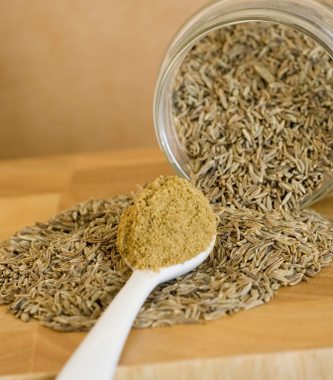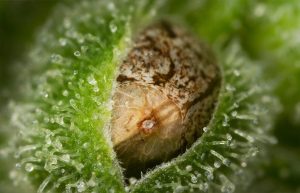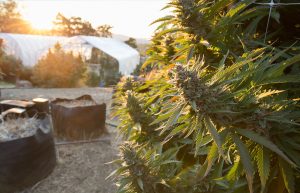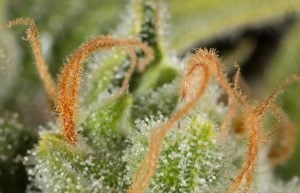
In a previous article available here [Presentation of the main cannabis terpenes (1st part)], we presented you with the main terpenes contained in the cannabis plant while explaining their respective properties. In this new article, we deepen the subject by approaching, this time, the secondary and tertiary terpenes, their roles and benefits.
SECONDARY TERPENES OR SESQUITERPENES
They are made up of 15 carbon atoms. The ses that is most often found in the cannabis are the hull (Delta-3-Carène), the oxide of Caryophyllène, Fenchol, Humulène, Linalool, Eucalyptol, Bisabolol, Nerolidol (or Peruviol), Alpha-Phellandrene (A-Phellandrene) , Camphene, α- β-y-terpinnes, Farnesène or Terpineol.
DELTA-3-CARÈNE
The Delta-3-Carène is one of the main components of essential pine oils. It has known properties as phytoncid (name given to a set of anti-microbial volatile organic compounds emitted in air by trees and herbaceous plants), it also demonstrates anti-inflammatory and anxiolytic effects. In addition, recent studies have shown that the hull plays an effect in improving sleep and that the oral administration of Delta-3-Carène increases the duration of sleep and reduces its latency. He potentizes the synaptic responses which are moderate by GABAA receivers, by prolonging the constant time of decreasing inhibitory synaptic responses.
KARYOPHYLLÈNE OXIDE

Caryophyllène oxide is an epoxide sesquiterme, that is to say a hydrocarbon which fulfills both a defense role and both which serves as a fragrant component, whose perfume can be described as fresh, gentle, dry , wooded and spicy. This is precisely a component used by drugs dogs to identify the cannabis. It interacts with the endocannabinoid system. It is commonly found in the absinthe of the fields, salty heliotrope, cinnamon, sticky sage and basil.
FENCHOL
Fenchol has an aromatic profile dominated by camphor, strong and fresh. This terpene shows a broad spectrum antibacterial activity, and could play a role in the relief of pain by inhibiting the TRPA1 receiver, which is a fundamental protein in the body pain signaling system.
“CARYOPHYLLÈNE OXIDE IS USED BY DRUG SNIFF DOGS”
HUMULNENE
Humulnene is also known as α-capyophyllene (Alpha Caryophyllène), it is a terpene that is found in the flower cone of Houblon. Humulène significantly contributes to the anti-inflammatory effects of cannabis. It is also considered an active mechanism in the fight against tumors, as evidenced by its ability to produce reactive oxygen species (ROS).
LINALOOL
LINALOOL is a monoterpenic alcohol largely present as a major constituent of essential oils of plants, in particular concerning lavender and coriander. LINALOOL does not present any particular toxicity in itself, it has even been shown that it has a complete range of bioactive synergistic virtues, in particular anti-inflammatory, anticancer, anti-hyperlipidemal, antimicrobial, antinocious, analgesic and neuroprotective properties. In addition, linalool produces anxiolytics and antidepressive through the 5-HT1A serotonin receiver.
EUCALYPTOL
Eucalyptol releases as its name suggests, a strong fresh, marked and slightly spicy eucalyptus smell. We frequently find this terpene in eucalyptus as in certain varieties of orchids. Scientific investigations have revealed that eucalyptol demonstrates obvious anti-inflammatory and analgesic properties.
BISABOLOL
Bisabolol has a fairly soft fragrance, close to citrus fruits and chamomile. It is found precisely in chamomile and other natural spices. It is a terpene widely used in the perfume industry. Some institutional studies have shown that bisabolol has anti-inflammatory and antibacterial properties.
NEROLIDOL
Nerolidol is an alcohol sesquiterpenic that is found as a major element in the composition of the essential oils of Neroli, Myrocarpus Fasptigiatus and Brassavola Nodosa. It is also present in lower proportion in ginger, lavender and lemongrass. This terpene is commonly used in perfumery, thanks to its floral, fruity, fresh, intense and particular aromatic profile. It is also used to develop Cologne water. It seems that non-surgery has antiseptic, energizing and anti-fungal properties.
ALPHA-PHELLANDRENE
The Alpha-Phellandrene gives off a pleasant smell of mint and citrus. It is the main constituent of essential oils from certain varieties of eucalyptus. Scientific studies demonstrate that a-phellandrene can have multiple beneficial properties, such as strengthening the immune system, or antifungal, anti-inflammatory and analgesic properties.
THE CAMPHÈRE
Camphene is a terpene that has a spicy and herbaceous smell. This is a major element used in the composition of mastic gum oil. It is also found in minority quantities in essential oils of turpentine, cypress, camphor, lemongrass, neroli, ginger and Valérian. Camphene has hypocholesterolemic effects and hypotriglyceridemic, which allow better internal preventive regulation of cholesterol and triglycerides. It is also used for applications in Ayurvedic practice.
Α- Β-Y-TERPINNES
The Alpha, Beta and Y-Terpinnes are present in the chilli of Jamaica, eucalyptus, citrus, juniper, tea tree, cardamom and marjolaine. The α isomer (alpha) is also studied as an anti -cancer compound.
FARNESÈNE
The Farnesène gives off a strong smell of greenery and apple. It is found in a minority quantity in basil, apple, mint and ginger. It is used by certain insects for communication. It is also present in certain plants which use it as repellants against harmful. Farneséène is an element used for the manufacture of tires in the automotive sector, as in the development of many fragrances in the perfume industry. It seems that it has interesting antibacterial properties.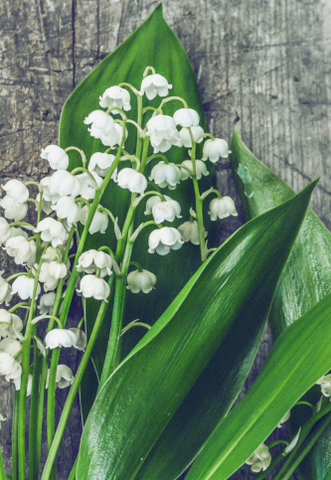
TERPINÉOL
Terpinéol is a monocyclic monoterpanic alcohol, which is essentially found in pine essential oil, as in other trees as well as certain plants (lavender, juniper, livèche and marjolaine). It is identified thanks to its perfume similar to that of lily of the valley, lilac and hyacinth. Terpinéol is used for the manufacture of soaps and also for other uses in cosmetics. A scientific study demonstrates that he could act beneficial to combat depression.
“CAMPHRE IS AN EXCELLENT ANTIFUNGAL AND ANTIPARASITIC”
TERTIARY TERPENES
These are those that are found in small quantities in the cannabis plant: border, guaiol, ceded, camphor, phytol, geranyle acetate, pulegone, cymene and isopulegol (acetate of menthyle).
BORNEOL
Borneol is a monoterpene, which is identified using its menthol, herbaceous, and even wooded smell. The latter is present in ginger, sagebrush, artemisia, rosemary, sage, oregano and certain types of cinnamon. It is used by industrial manufacturers for the development of various repellents against insects. It would seem that he plays an important role in terms of the entourage effect, in complementarity of the action of other terpenes. On the therapeutic level, recent scientific investigations would have demonstrated that it contributes quite effectively to the apoptosis of cancer cells, in other words, it would cause the natural death of the latter. Other studies mention that he also has antiviral properties, since it is a powerful Simplex type 1 herpes virus inhibitor.
GUAIOL
Guaiol is an alcohol sesquiterpenic, whose aromatic profile is similar to that of pine, and which can therefore be easily confused with Pinene. This is present in certain trees, such as guaiacum, pine and cypress. On the medical level, it turns out to be interesting because it has a strong anti-inflammatory, antimicrobial, antibacterial, antifungal and antivirus potential.
THE CEDED
Ceded is a sesquiterpene that is found in cedar essential oil, which is extracted from the tree that bears the same name. This terpene consists of formidable antiparasitic and natural anti-inflammatory drugs.
THE CAMPHOR
The camphor is a bicyclical terpene, from the camphorrier (Cinnamomum Camphora). It can easily be confused with bordea, because their odor is quite similar. It is an excellent antifungal and antiparasitic, as it demonstrates a strong effectiveness by actively fighting against pathogenic fungi and by producing a powerful repellant effect against harmful insects. It has been observed that camphor has interesting antiseptic, anti-inflammatory and antimicrobial properties.
PHYTOL
Phytol is one of the main acyclic so -called alcohols, which is a precursor of vitamins E and K. It is a very common terpene, found in many esterified chlorophyll plants like green tea, or milk, eggs and also in oil sediments. It gives off a strong floral and fresh balsamic smell, hence its use in the cosmetic sector. Several scientific studies have shown that it has soothing, digestive, anti-oxidant, anti-inflammatory, anti-criminals and that it also strengthens immune defenses.
OTHER TERTIARY TERPENES
GERANYLE ACETATE
Geranyle acetate is a monoterpene which has a characteristic floral and fruity fragrance reminding us that of the rose. It is naturally present in lemongrass, pink, palmarosa or coriander oils. Geranyle acetate is widely used in cosmetics as a perfume agent in the manufacture of soaps and creams. This terpene has soothing, antispasmodic, analgesic and anti-inflammatory properties.
THE PULEGONE
Pulegone is a monocyclical monoterpène that gives off a strong smell that reminds us of peppermint, Pouliot and camphor. This terpene is used in the aromatherapy sector as in perfumery. It can prove to be a powerful natural insecticide against pests, but beware of its toxicity in high concentration. Fortunately, pulegone is present in tiny quantities in the plant of cannabis.
CYMENE
Cymene is a monoterpene whose aromatic profile is intensely herbaceous and spicy. It is generally found in essential oils of cumin and thyme. Multiple international scientific investigations have revealed that Cymene is a powerful natural analgesic and that it also has anti-inflammatory, antibacterial, antifungal, antiviral and expectorant properties.
ISOPULEGOL
Isopulegol or mentyle acetate, is simply a pioneer of menthol, it is a monoterpenic alcohol whose aroma is intensely menthol. He is present in Mint Pouliot and lemony eucalyptus. On the therapeutic level, scientific studies have shown that Isopulegol has analgesic, anxiolytics, relaxing, gastroprotic and anti-inflammatory virtues.
